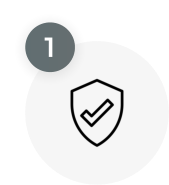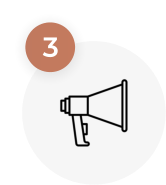 Business owners face a constant learning curve with technology in today’s world. It’s not enough just being a business leader, it’s now more important than ever to have a good understanding of the social media landscape that surrounds the ever growing opportunities – to reach out and gain new clients. And the message is clear that if you don’t jump on board this ship, it will continue to sail without you.
Business owners face a constant learning curve with technology in today’s world. It’s not enough just being a business leader, it’s now more important than ever to have a good understanding of the social media landscape that surrounds the ever growing opportunities – to reach out and gain new clients. And the message is clear that if you don’t jump on board this ship, it will continue to sail without you.
So when it comes to your web presence, how far should you go to understand the technology that builds your website?
I’ve often had conversations with business owners about their website and explained to them about “platform”, “WordPress”, “Custom CMS”, even email marketing, greeted with the response “… so where does that email go to?” It can be incredibly confusing if you’re not familiar with the terminology. I often find myself repeating what I’m saying – a lot, and explaining it in ways to help make it easier to understand.
If you plan to invest in the re-development of your website in the near future, then I believe it’s important to understand some of the basics in order to know what you’re asking for. This will be an investment for the future, so in order to compare “apples with apples” so to speak it’s good to know what you’re asking for in the first place.
So let’s take a look at some of the basic processes that are involved in building a new website:
Wireframe
A wire frame is simply a blank canvas laying out boxes to denote where you want different content and images to appear. The layout is incredibly important as this will dictate how the development will progress.
Design
The Photoshop (PSD) design does not just include where the punchy images will go, it also includes designs for: Text colour; Font; background colours; Heading styles and sizes (H1, H2 etc); link colours; layout.
Also, not all pages will have the same design layout. For instance the Homepage of a website will always be different to the content pages, which will always be different to the blog page. So layouts will need to be designed for each of these pages.
UX (User Experience)
One of the most important aspects of design in today’s web world is designing from the user’s point of view. Keeping the design clean, easy to read, easy to navigate and making sure most of all that the user experience is a good one. Ultimately we want users to come back and re-visit the site and recommend to others. So the UX is the most important aspect of design.
Platform
The “platform” is the software that is used for developing your website. Fewer and fewer websites now are built without using software in some form or other. The reason for this is so that it makes it easy for the owner to update the content themselves, rather than having to go back to their web designer all the time.
Now there are a number of different platforms available that are “open source”. Open source is when software has been developed by a community and is therefore freely available to download onto the server where the website will be hosted. Some of the most popular platforms that are used by web designers today are: WordPress, Drupal, Joomla, Magento. There are of course many others however these are the most popular.
Development
So now a wireframe has been created, and a design has been agreed this now needs to be converted into a real, live website! This involves development work (HTML5, CSS, Java, PHP.. etc). In other words the language that programmers develop code in to make it look and do all the things you want it to do. Even with the skill and expertise required, sometimes bugs can be found that need to be fixed and all this takes a fair amount of time.
Once the development has been completed then it needs to be tested. It’s important that your new website works across all the latest browsers, and is viewable on mobile devices. We have to check all this before we can agree that the site is ready to go live.
Value for money
So in summary, when you receive a quote for your new website that may be a little higher than you thought, there will be good reason for it. If you follow due diligence and get 3 or 4 quotes from different web design companies, then make sure they are “like for like” in order to compare prices.
You will probably find that each web company may have a different approach and use different software which makes it very difficult to compare one against the other.
If you understand what you want and what you are getting, it makes it easier to make that very important decision.




